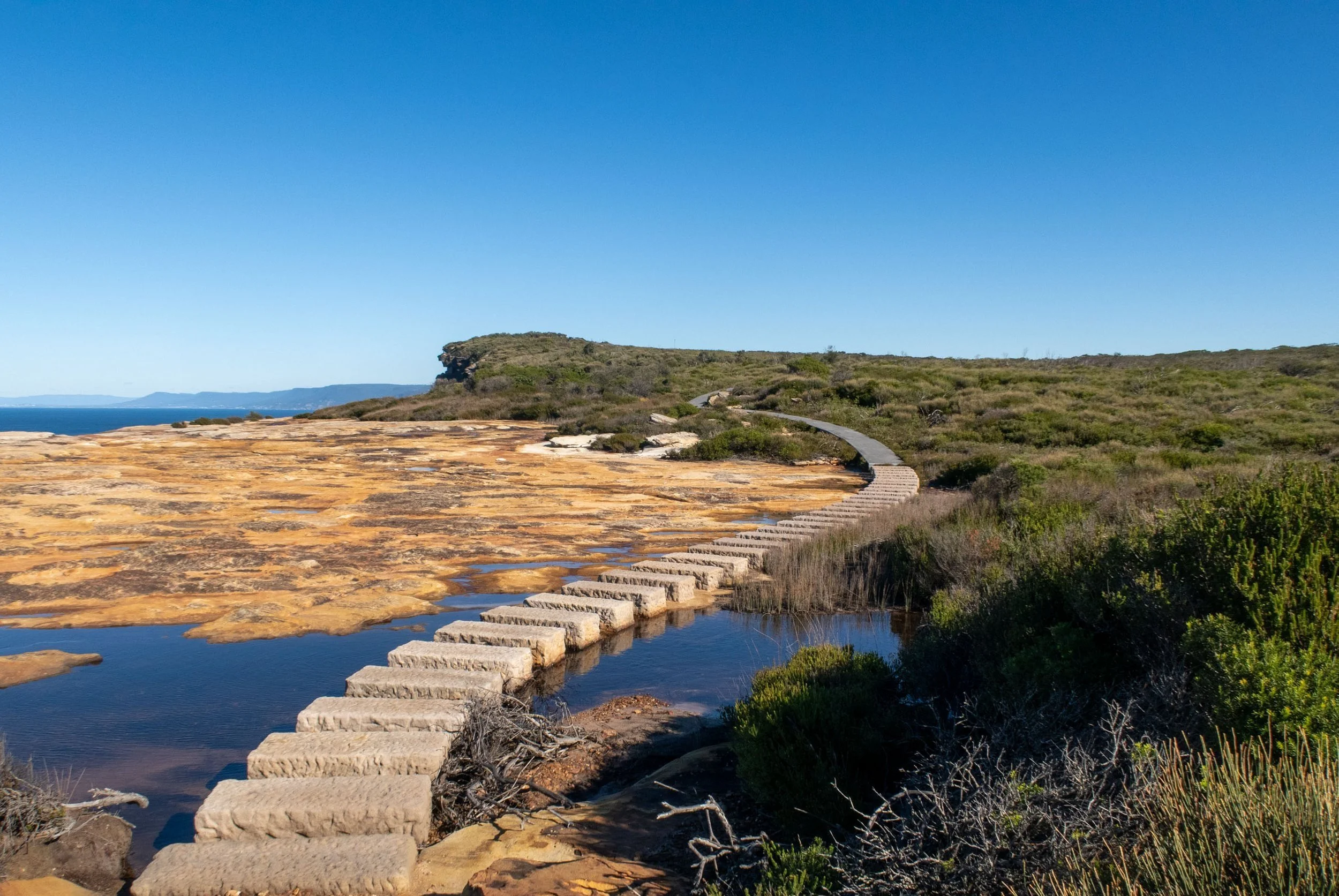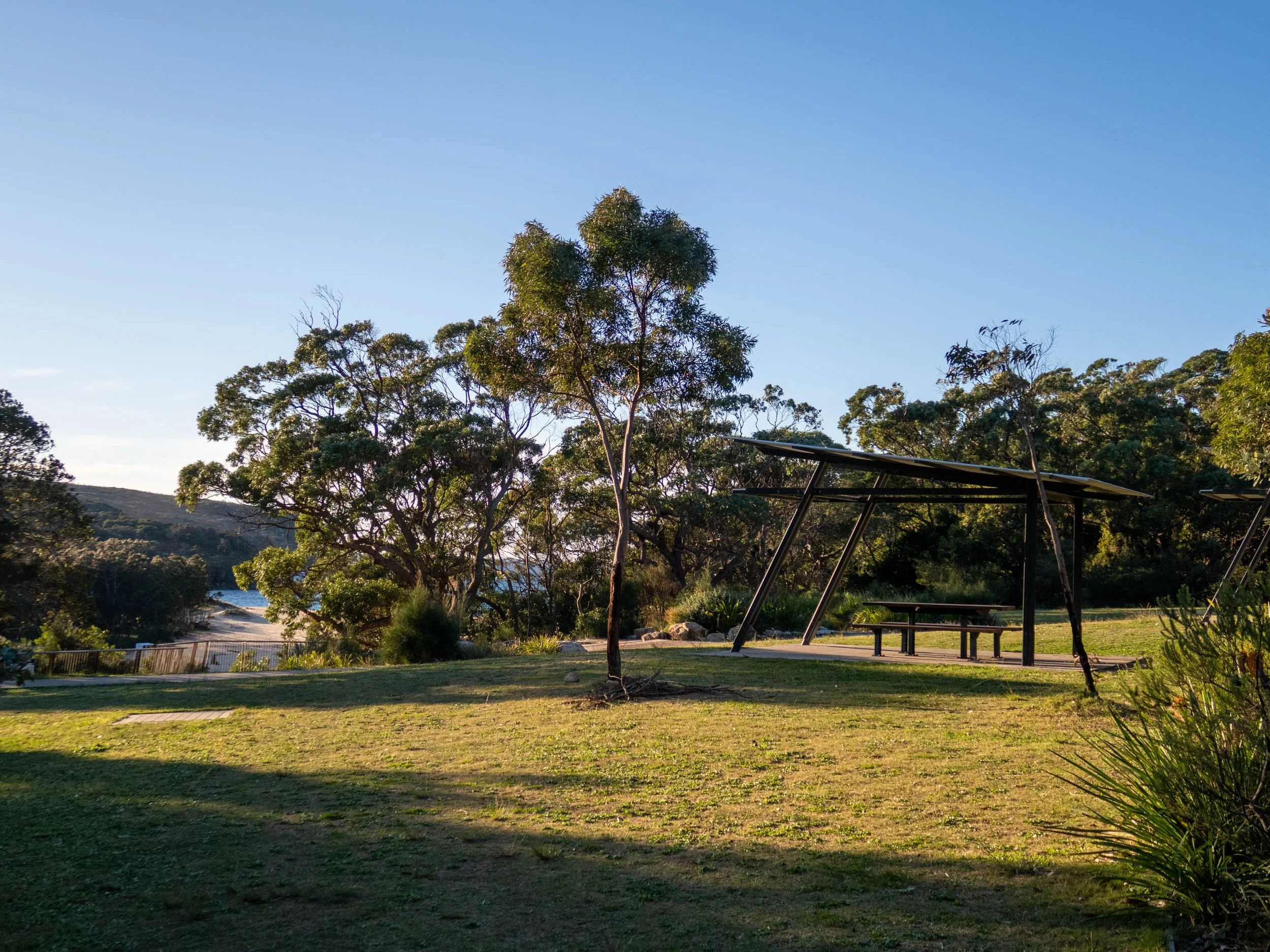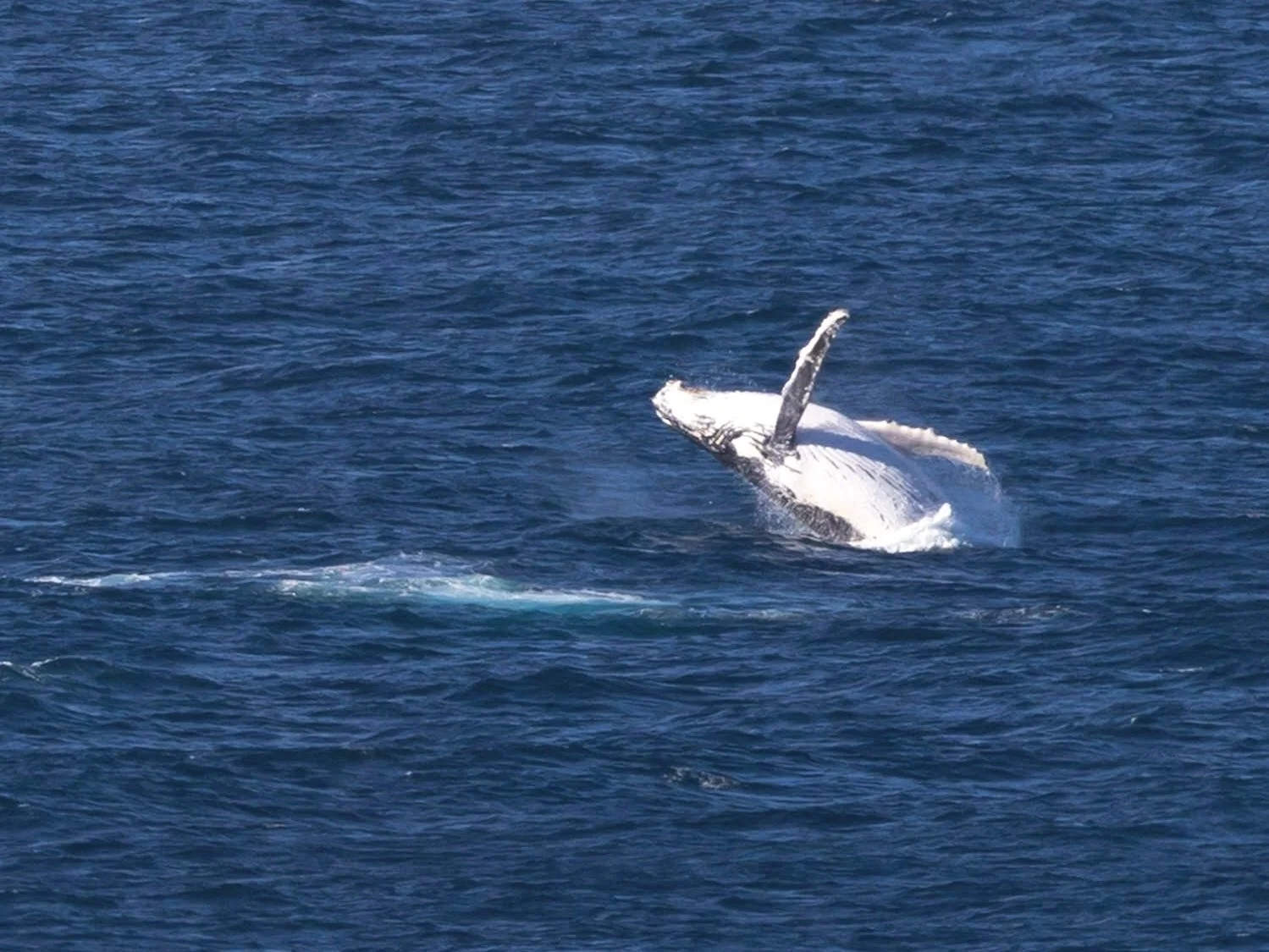Wattamolla to Eagle Rock
-
Set within the Royal National Park, this is one of the most spectacular, and most popular, coastal hiking experiences in Sydney.
Distance 9 km Time 3 hours
Level of Difficulty Easy/Moderate -
Beautiful bush and coastal landscapes
Stunning ocean views
Eagle Rock
Curracurrong Falls
Abundant wildlife and seasonal wildflowers
Great spot for whale-watching
-
Check National Parks website for information on closures before heading out
Go early to avoid the crowds (especially on weekends)
Take advantage of the toilets near the car park because they’re the only ones on the trail
Bring plenty of water as there are no potable water sources anywhere near the trail.
Pack a picnic
Hiking boots or sturdy shoes are recommended as you may ind yourself scrambling over potentially slippery rocks.
Pack layers and a waterproof jacket as the weather can change quickly
Mobile phone reception is patchy so download map before you head out
Don’t forget your camera!
I’d been keen to do this walk for some time. We chose a perfect winter’s day mid-week without the crowds, and were blown away by the sheer beauty of the area.
Nestled within the Royal National Park south of Sydney, this walk from Wattamolla Beach to Eagle Rock is without doubt one of the most rewarding coastal hiking experiences in Sydney. And when I say hike, it’s more of a walk really with just a few hilly bits to keep you on your toes.
The trail features dramatic cliff-top views, pristine beaches and a variety of native flora and fauna. And if you’re here at the right time, you might be lucky as we were, and see migrating whales breaching just off the cliffs.
Getting To Wattamolla
The walk begins at Wattamolla Beach,. To get there from Sydney take the Princes Highway (A1) south and follow signs to Royal National Park. Enter through the park's main entrance (entry fee applies), then continue along Sir Bertram Stevens Drive for approximately 12 kilometres until you reach the Wattamolla picnic area. The designated parking areas at Wattamolla Beach can fill up quickly on weekends so an early start is recommended.
Public transport options are limited. You could get a train to Cronulla Station, then take a bus to the park entrance. but you’ll need to get a lift in from there because it’s a long way.
The Trail
This Wattamolla to Eagle Rock trail is part of the 26km long Royal Coast Track which runs between Bundeena and Otford. Most people complete this walk over a couple of days, camping overnght. The Wattamolla to Eagle Rock section of the track is just 9 kilometres return and will only take 2-3 hours to complete, depending on your pace and photo stops.
Starting from Wattamolla Beach, the path initially follows the coastline before climbing steadily through coastal heath and woodland. The track follows a boardwalk for much of the way and is generally fairly flat and well-defined. Look out for the occasional markers to steer you in the right direction where the path is less clear.
There are some rocky sections that require careful footing and a creek crossing which will have you navigating a few big boulders. The final approach to Eagle Rock also involves a short but steep scramble over rocks to reach the lookout point.
The side trail leading out to Eagle Rock is about 150 metres long, unmarked and not all that obvious. We walked straight past it and had to double back. The rock ledge is bigger than it looks from the side and you don’t have to go right to the edge to get sweeping views in all directions.
Not quite done yet - head further south to look back at Eagle Rock, the bird’s head quite distinctive from this angle.
The return journey follows the same route, offering different perspectives of the spectacular coastal scenery you encountered on the way up.
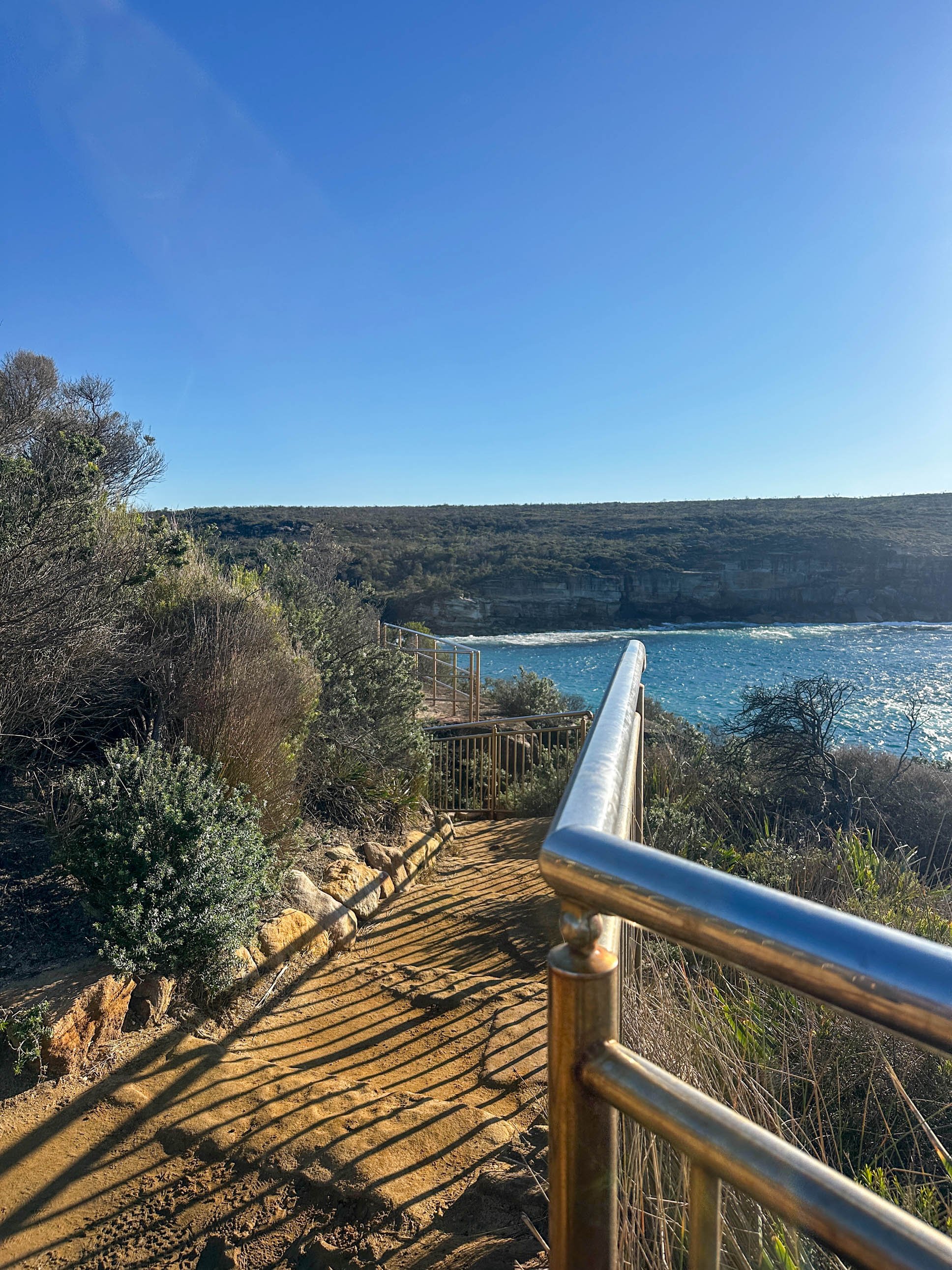

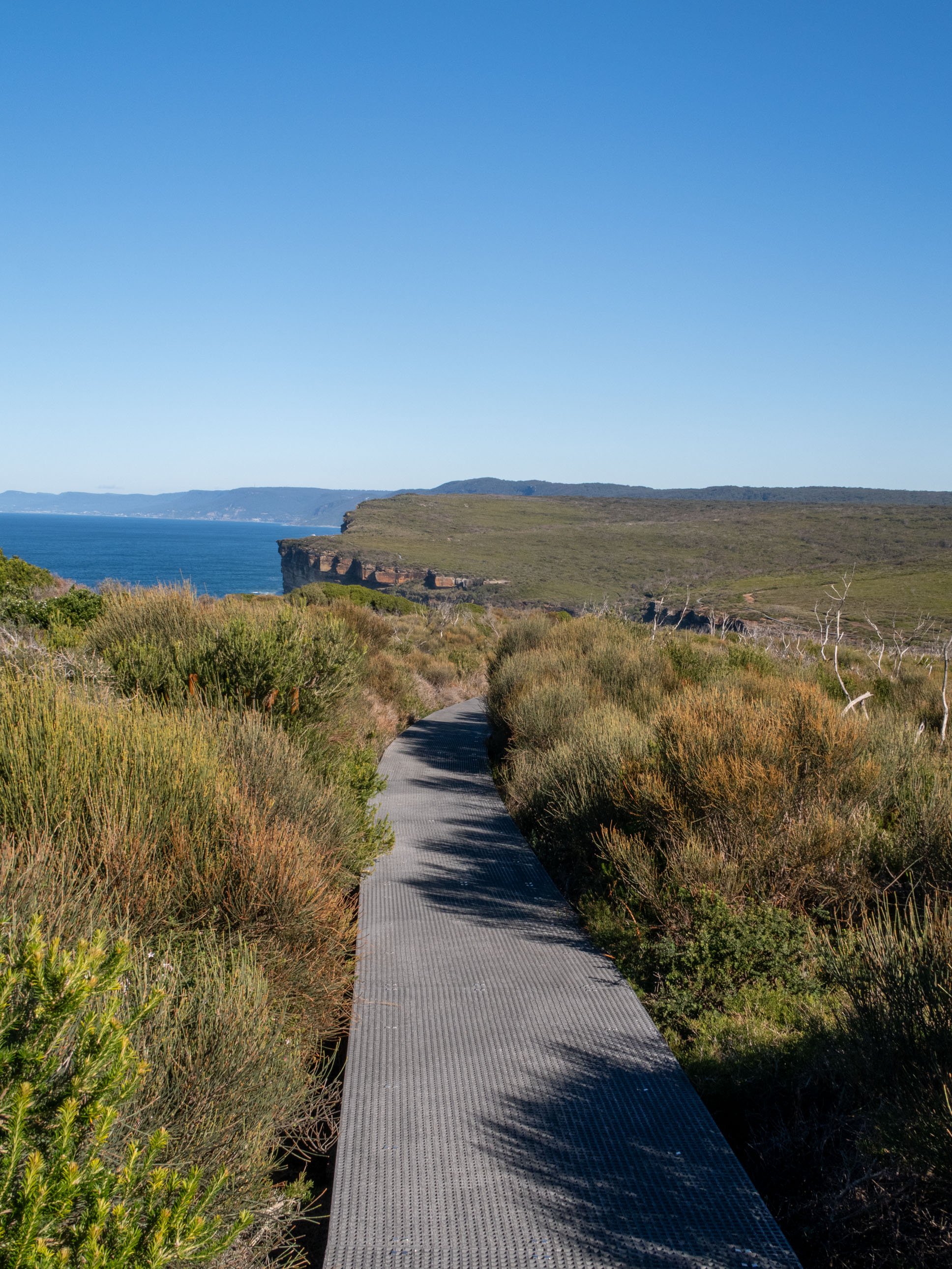
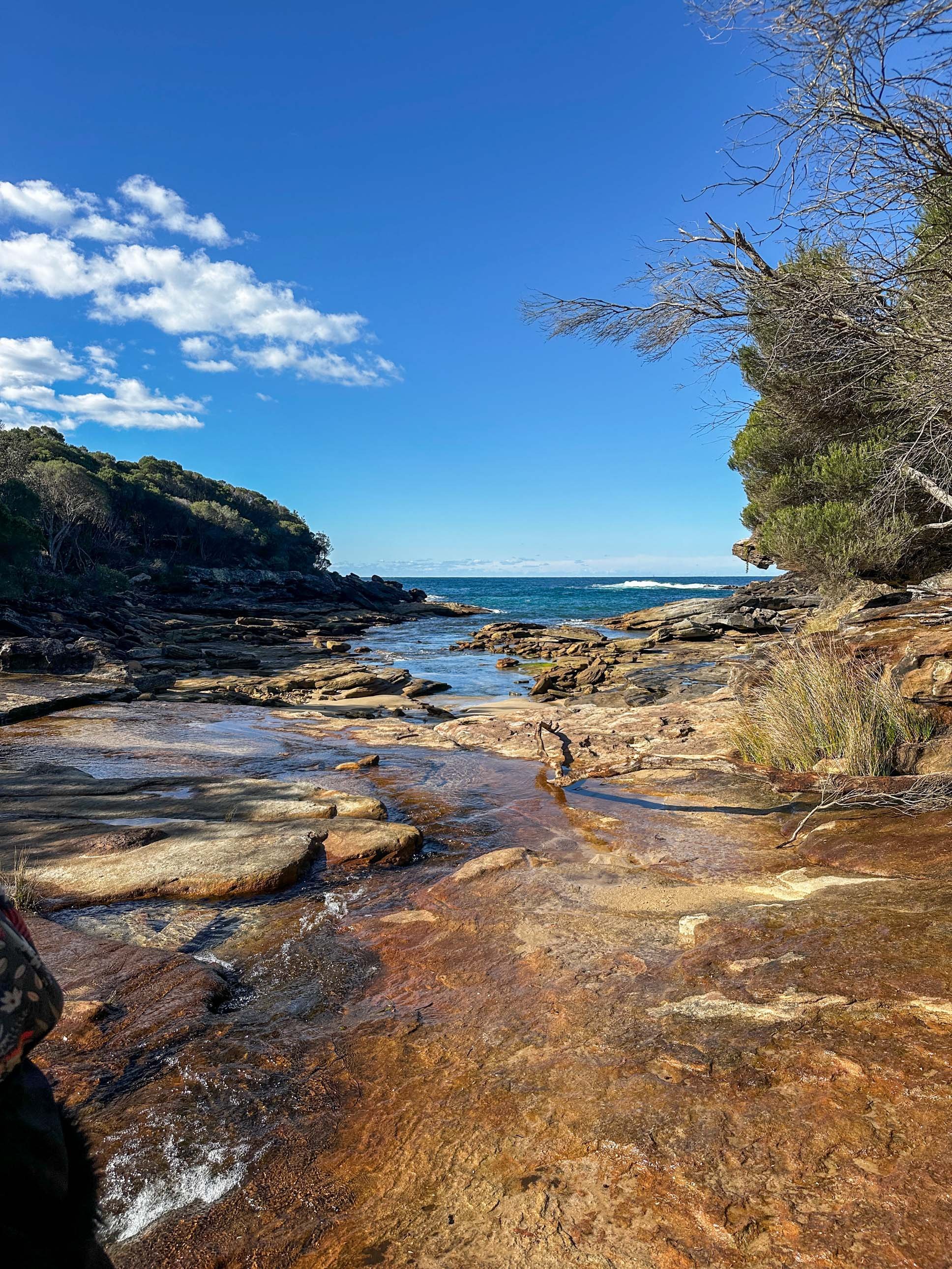
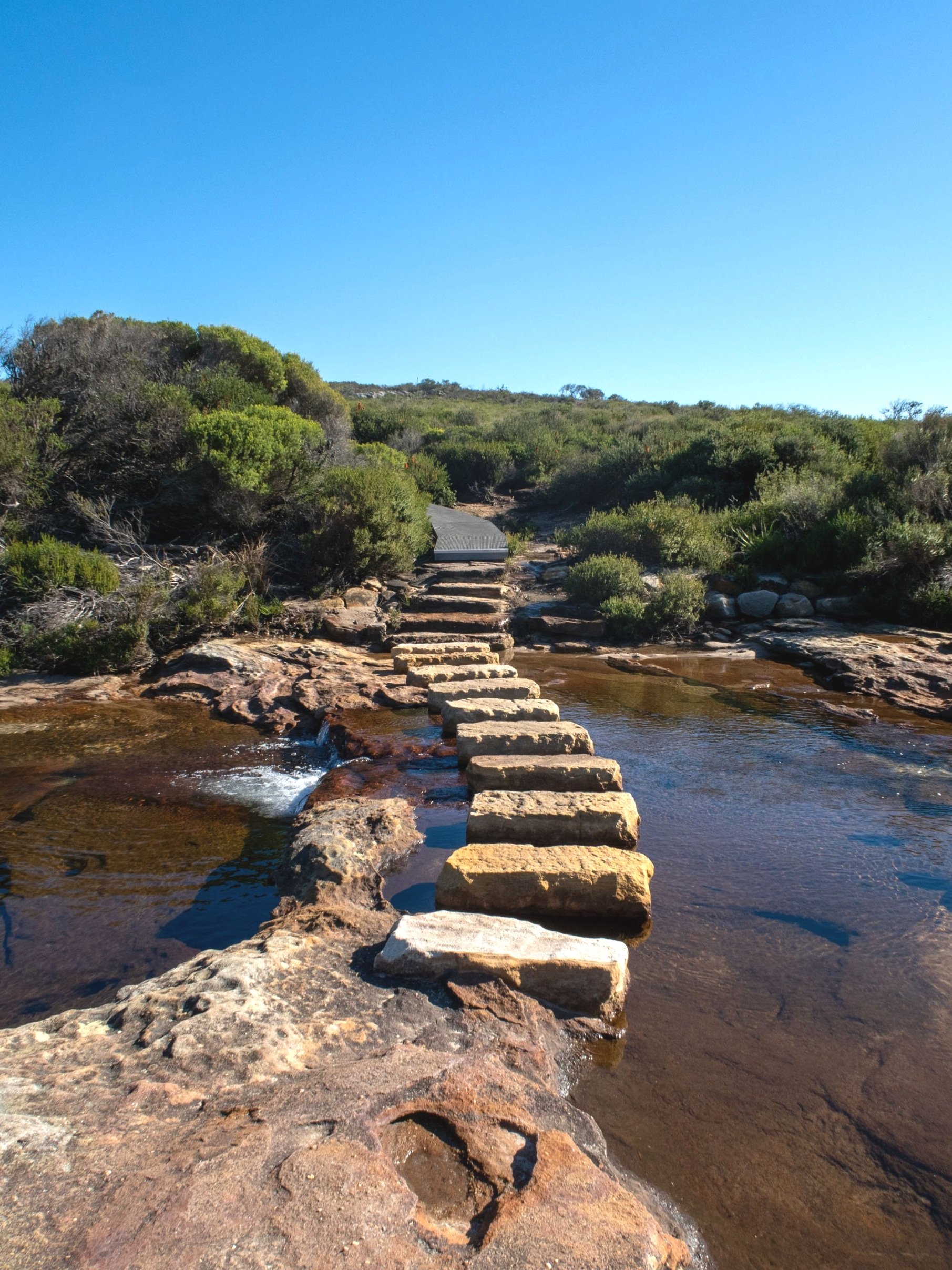
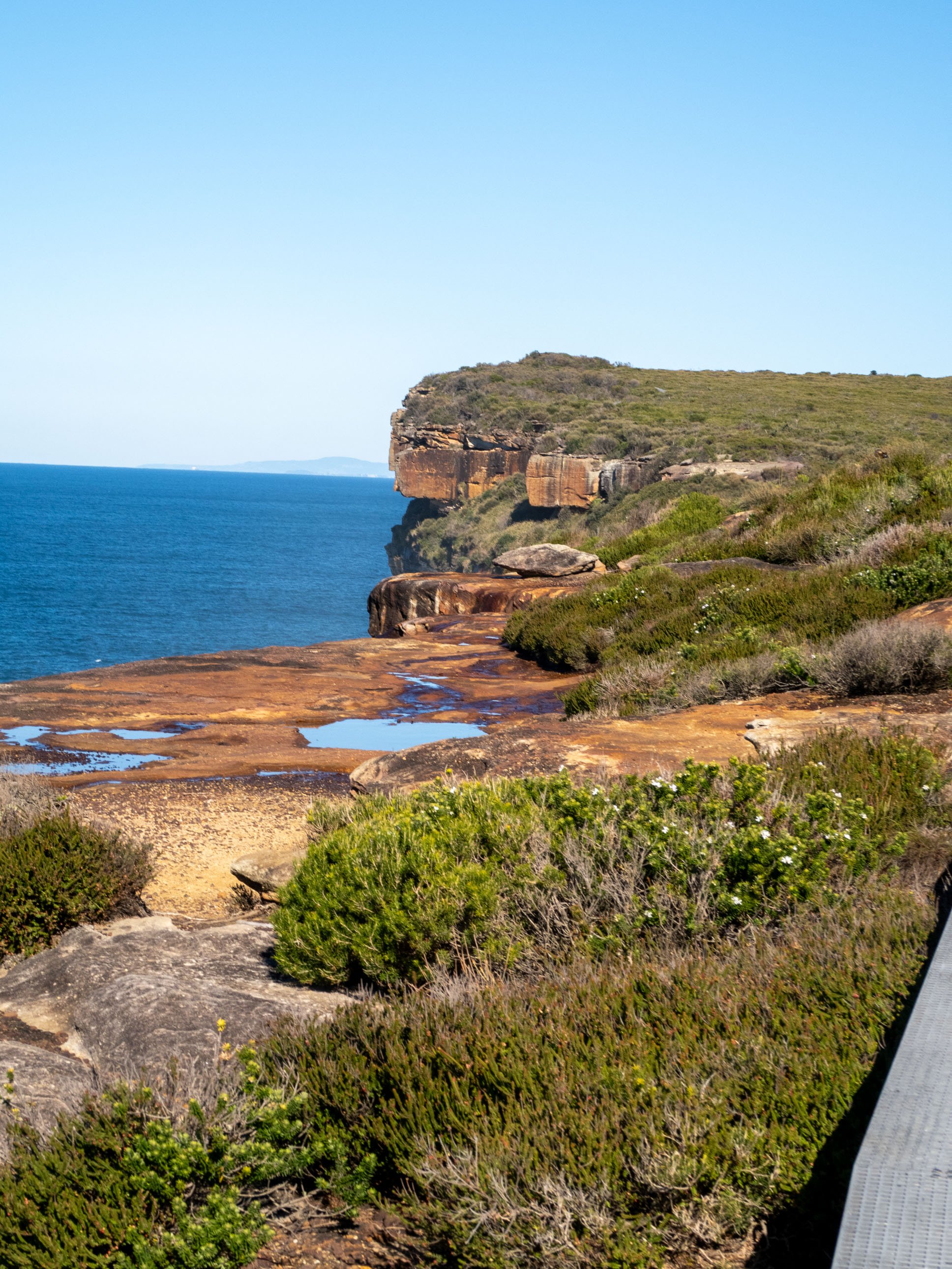
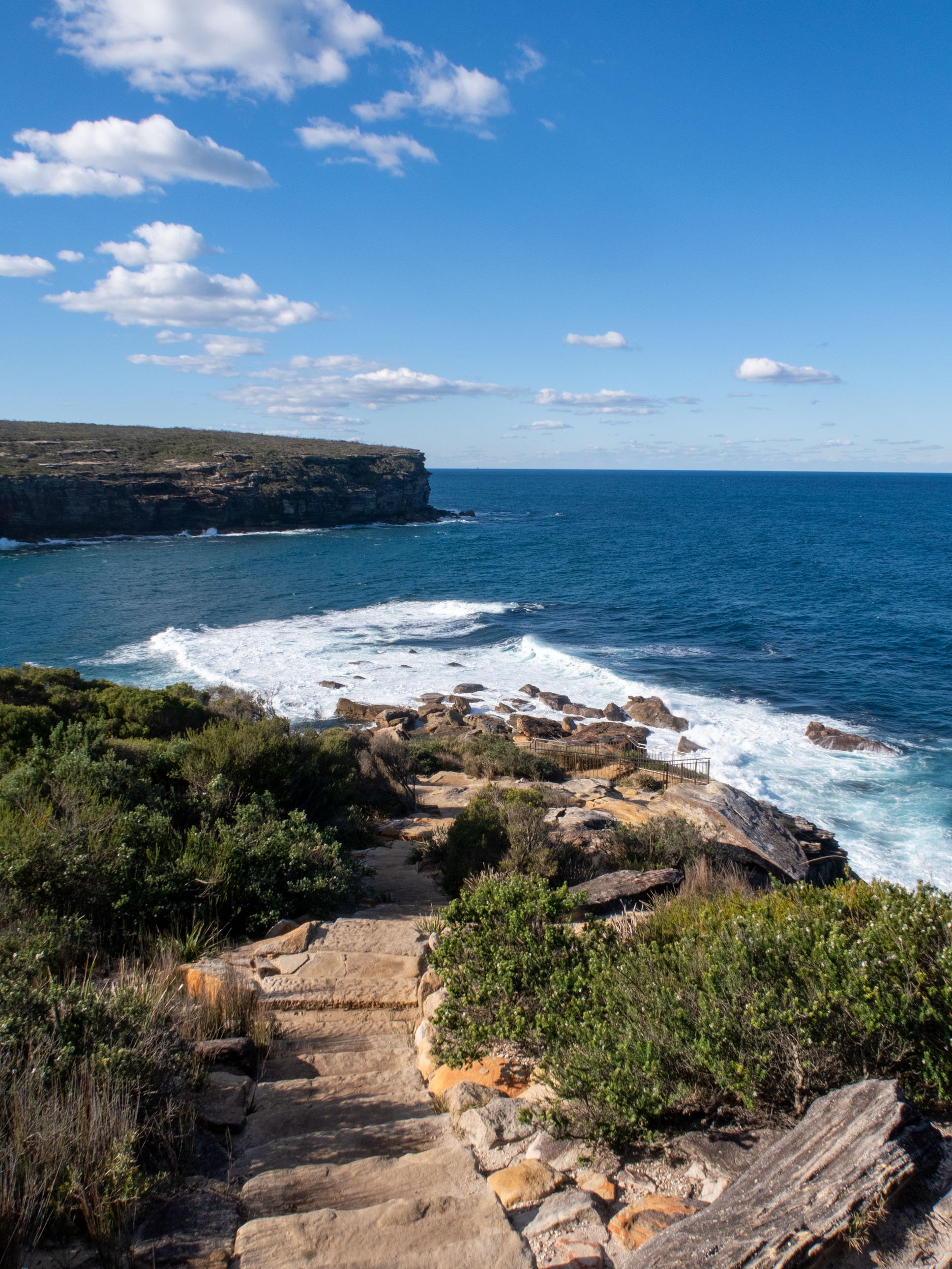
Highlights
The beach at Wattamolla, with its calm lagoon makes it perfect for swimming and snorkeling. It serves as both start and end point for the walk and is the ideal spot to cool off after a hike. The nearby picnic area has barbecues, picnic tables and a large grassy areas for kids to play.
Providential Point - Not far into the walk you’ll come to this spot. It’s a great vantage point, popular with birders and great for whale watching.
Eagle Rock is a sandstone outcrop that juts into the Pacific Ocean and is the star attraction on this walk. From the top of the rock you can see north toward Sydney's skyline on clear days, south to Wollongong and beyond along the rugged coastline, and east out to the endless expanse of the Tasman Sea. And if you’re lucky, you might see one of its namesakes, nesting or resting in the vicinity.
The twin cascades of Curracurrong Falls are a sight to see, especially after rain. You can view the falls from either side, their spray visible before you reach them, but Eagle Rock is the best spot to watch as they tumble as a pair off the cliffs into the ocean.
Wattamolla Falls are viewable via a slight diversion just before the start of the walk (follow the signs).
Wildlife
The Royal National Park is home to an impressive array of native Australian wildlife, and the area covered by the Wattamolla to Eagle Rock trail is widely heralded as one of the best places for spotting migrating whales (June to November). We walked in early June and saw heaps! We got very excited and the walk probably took us twice as long as it should have done because we kept stopping to watch them. One pod came in quite close to the rocks, escorted by a pod of dolphins, and we could hear the whales calling to each other which was such a treat.
Birdwatchers too are attracted by the variety of species here. We saw rainbow lorikeets, kookabuuars, wattlebirds, New Holland honeyeaters and silvereyes, We also spotted a wedge-tailed eagle heading would you believe, to Eagle Rock. There are many other birds to be found here, in the scrub or near the water. The Birds of Providential Point self-guided walking tour is a useful resource from the NSW National Parks and Wildlife Service that will tell you more.
History
This area holds deep significance for Aboriginal people, particularly the Dharawal people. Eagle Rock and the surrounding coastline were important sites for fishing, gathering, and ceremony. Archaeological evidence suggests continuous Aboriginal occupation of the Royal National Park area for many thousands of years. and rock engravings, shell middens, and rock shelters have been found in many areas of the park.
European settlement brought significant changes. The first recording of the British encountering the area was when explorers Bass and Flinders took refuge in Providential Cove in 1796.
In 1879 the area was designated as a National Park, making it the world's second-oldest national park after Yellowstone. The ‘Royal’ was added after Queen Elizabeth II passed by in a train during her 1954 tour.
During World War II, the coastline here was monitored for enemy activity, and remnants of this wartime period can still be found throughout the park, though not specifically along this particular trail.
In the Area
I came to the Royal National Park almost annually as a kid on school excursions, but before doing this walk it had been ages since I’d visited. I hope to be back soon.
There are many other walks within the park and the National Parks and Wildlife Service website is the best place to find one to suit. They also have information on camping, picnic areas and guided tours.
Cronulla is about a twenty minute drive from the entry to the park. The Cronulla Loop Track is a great way to explore the many beaches, reserves and parklands in the area and to soak up the local surf culture.
A little further on in the Kamay Botany Bay National Park is the Cape Baily Track, another great clifftop walk with fabulous views and whales aplenty.
